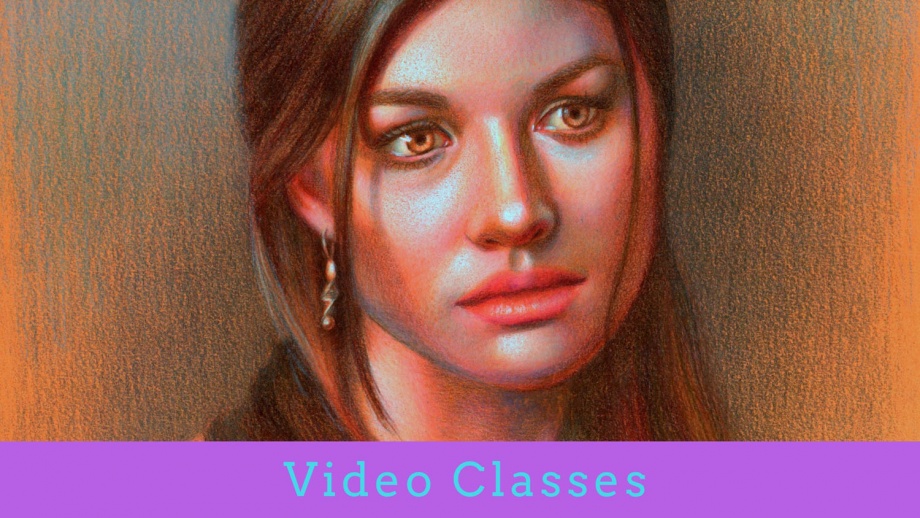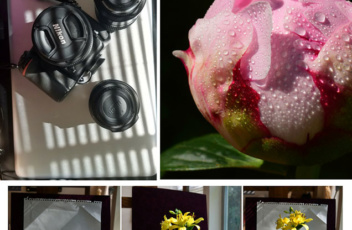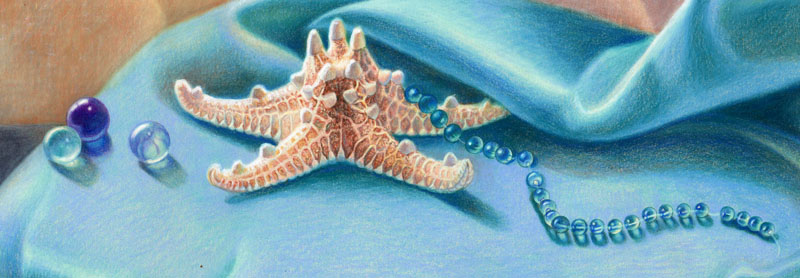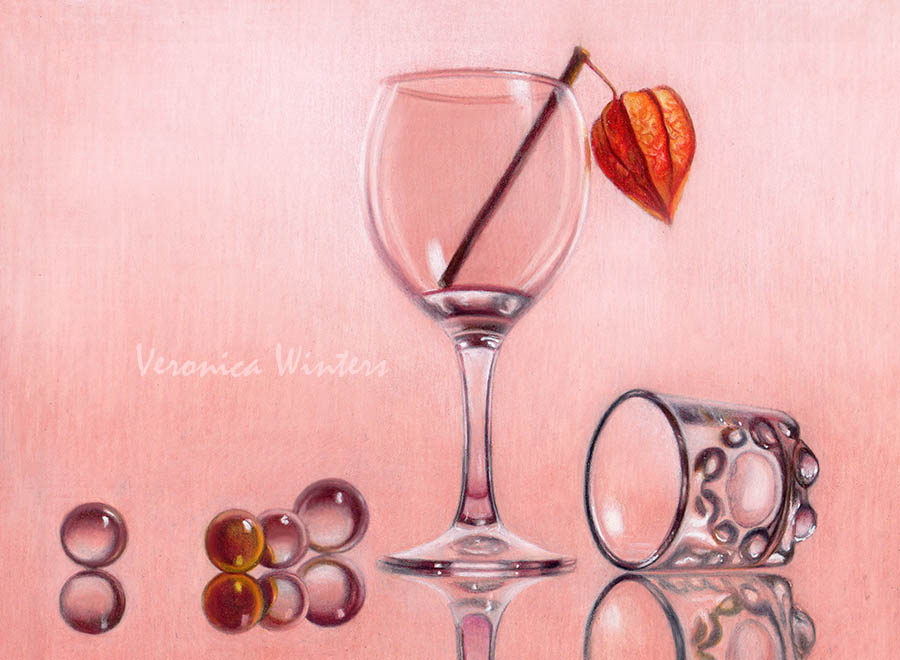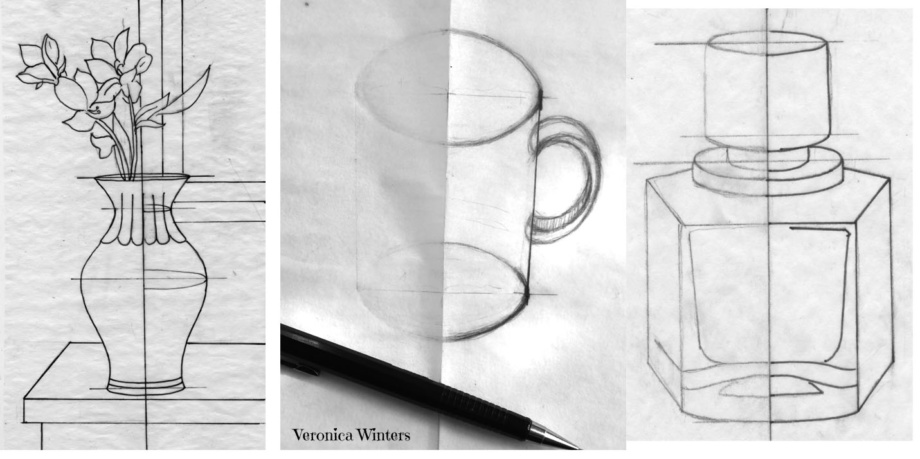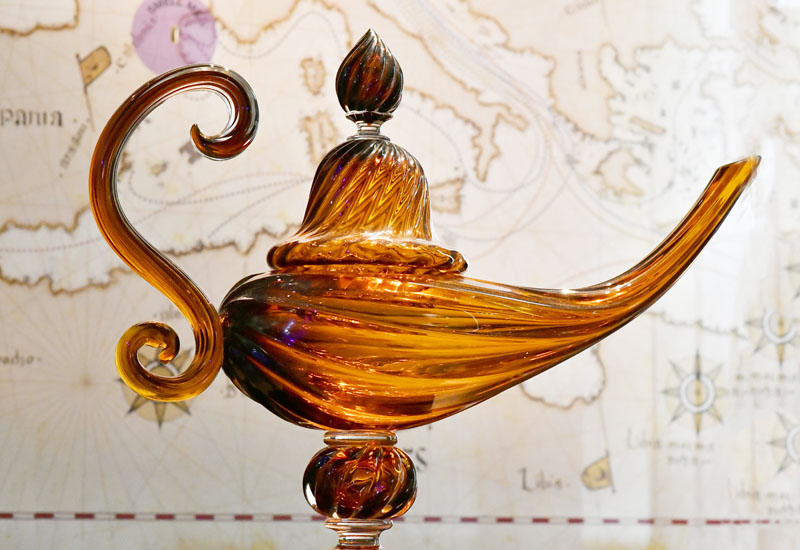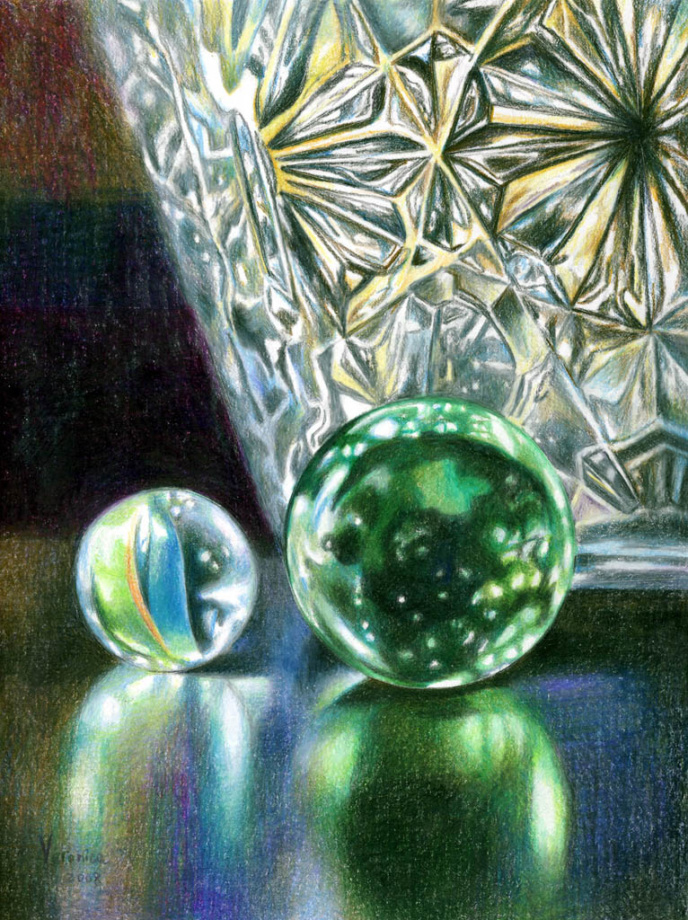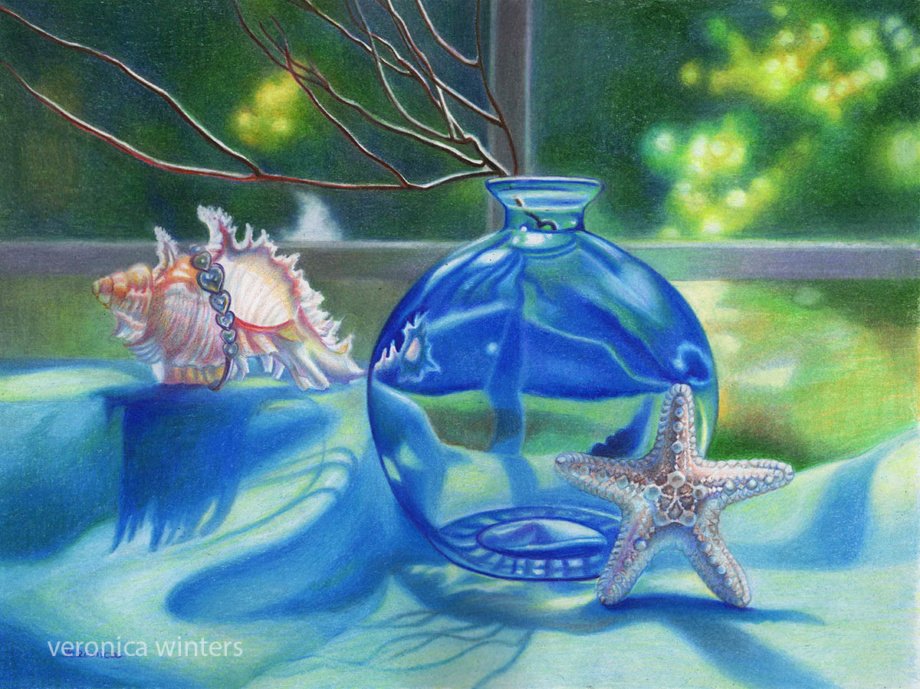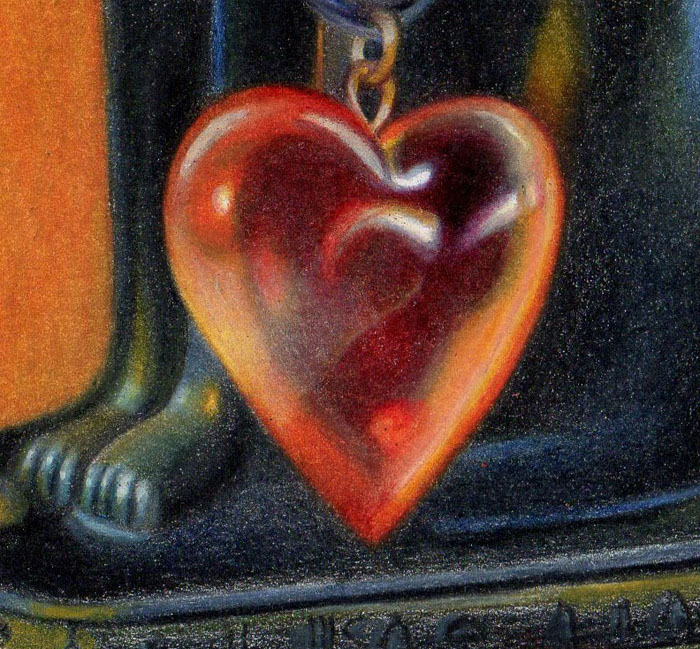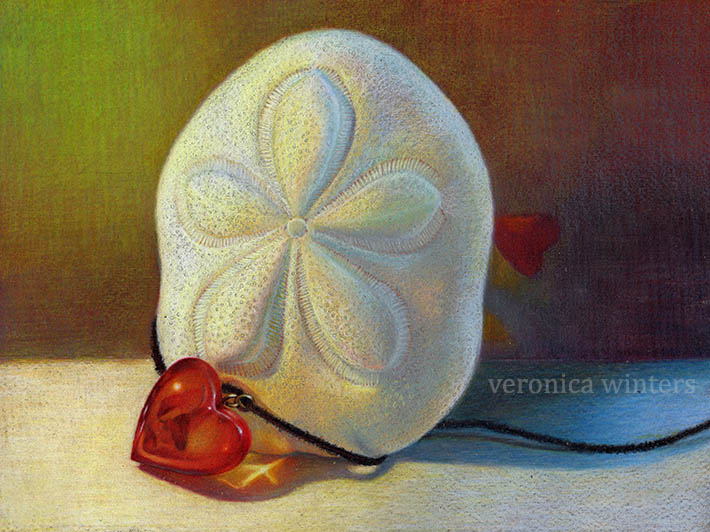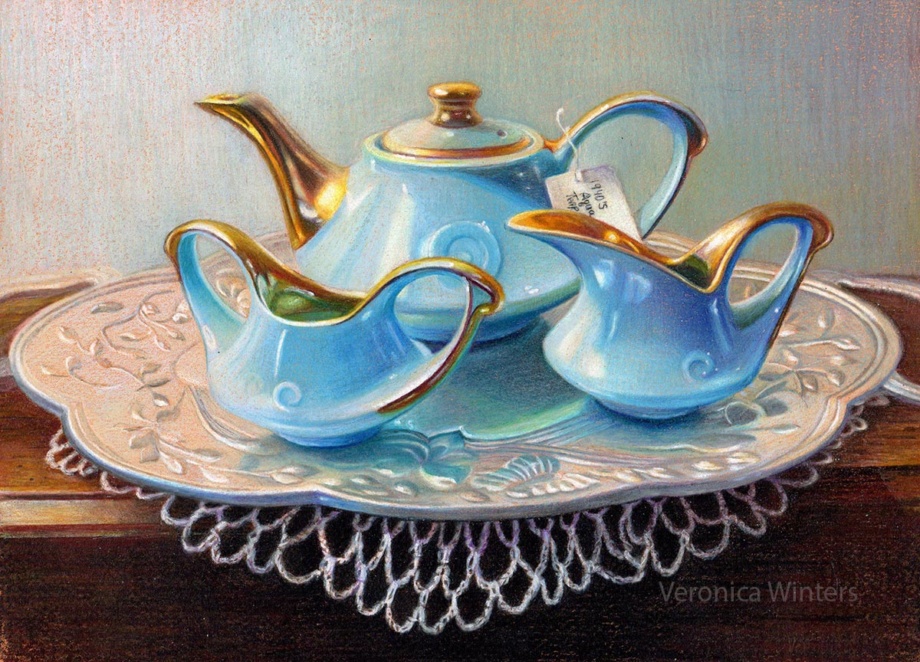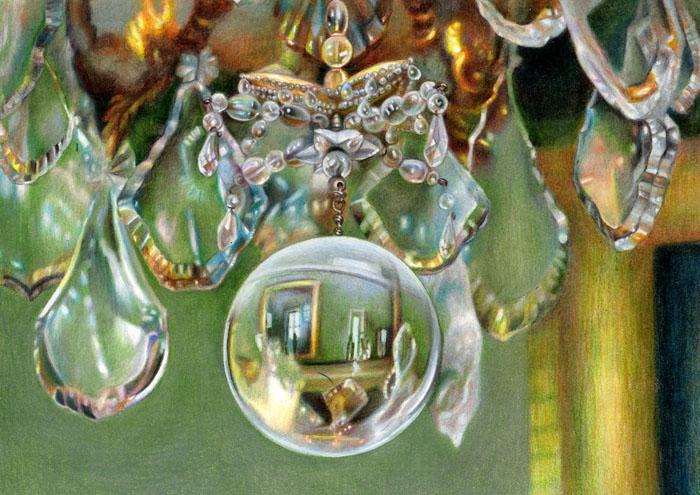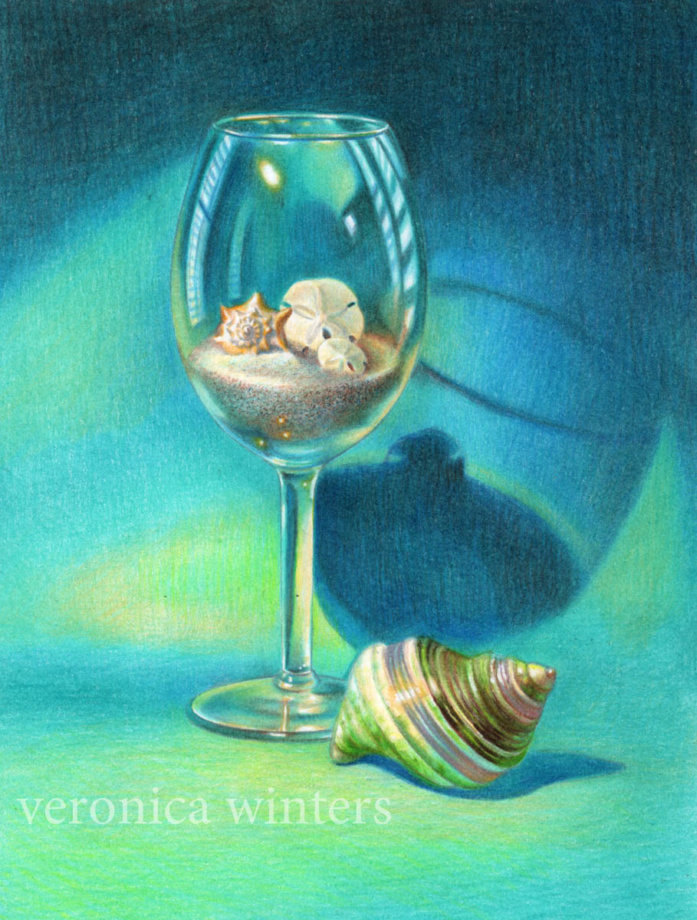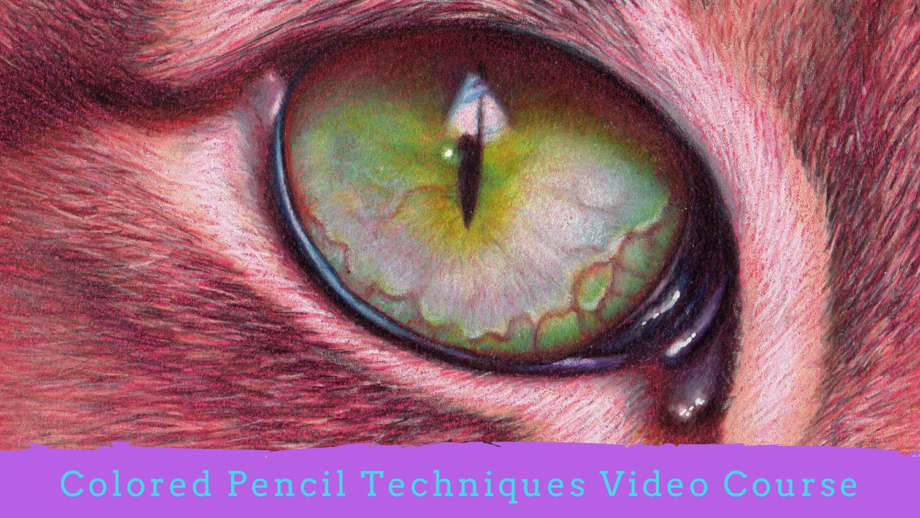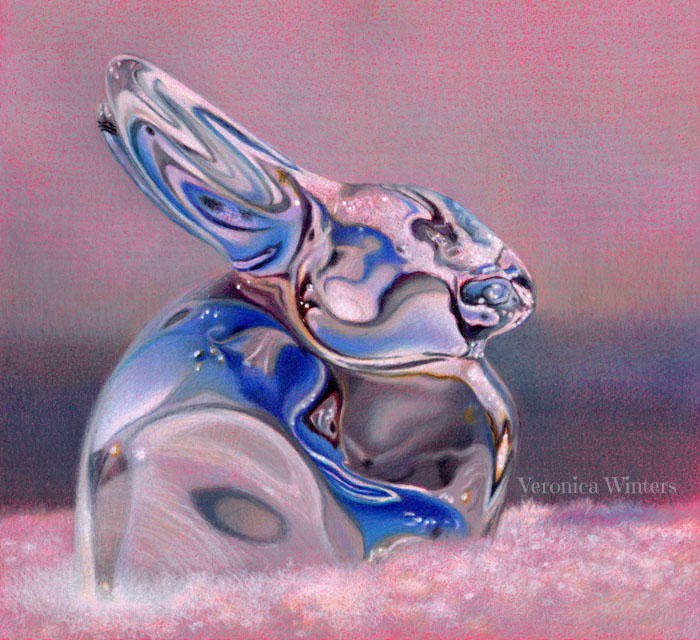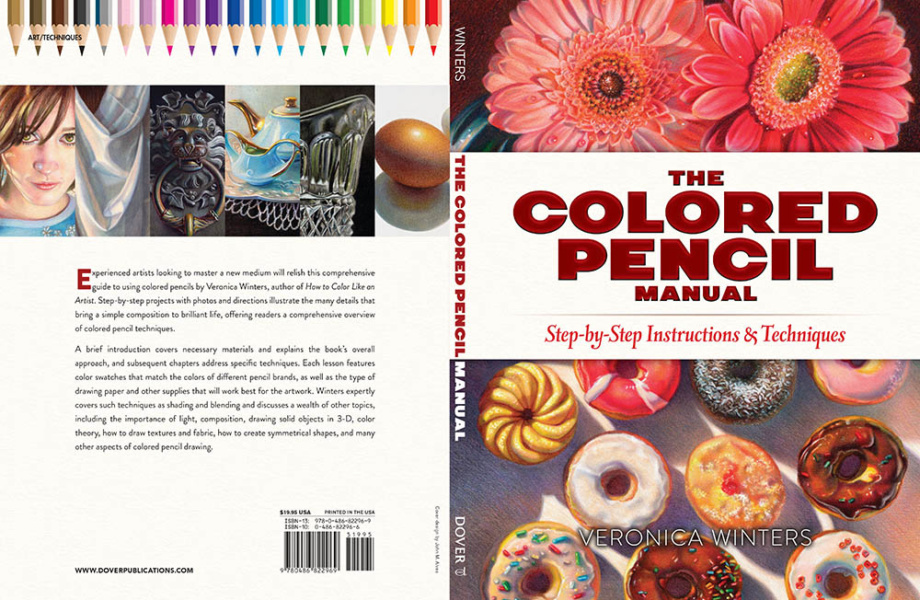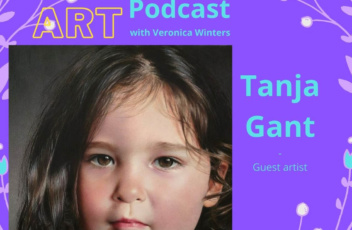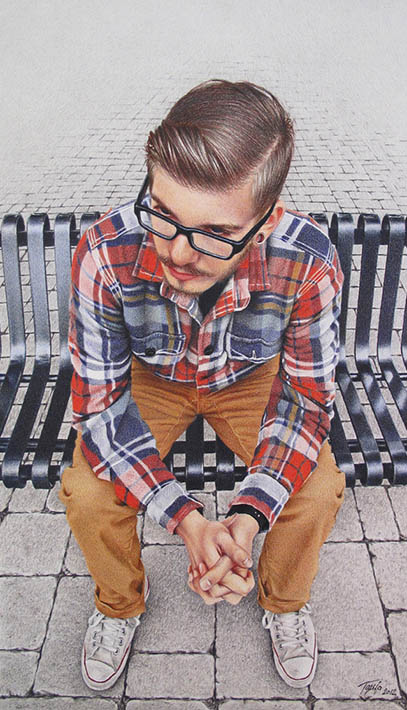If artists paint in figurative realism style, most rely on photography these days. Model fees, time constraints, lighting and studio conditions – all add up in a puzzle we have to organize and manage, if we paint from life. While painting from life is a must for realist artists to get the skill going, perfecting photography is also a necessary skill. Because colored pencil drawing is such a slow medium to work in, almost all artists rely on their references to create art as opposed to drawing from life. Sometimes it takes weeks to complete one colored pencil drawing, and we have to rely on our photo reference to capture story, composition, design, color, and details. That’s why great photography becomes key to artistic success. Let’s master it!
How to take great pictures suitable for colored pencil drawing and painting
It took me years to understand how to see the light turning the form and how to pick pictures, capturing that light. I used to play with pictures from fashion magazines that looked incredibly beautiful, yet they were missing something I couldn’t quite figure out what. Some were OK for black-and-white drawing but none of them were good for oil painting. Why?
All magazine pictures are Photoshoped heavily, getting rid of important information necessary for artists to capture the form realistically. First, the Photoshop filters and presets get rid of warm/cool balance in skin tones, objects and even backgrounds that we normally see in nature. Second, copyright is a big deal, and we can’t use such images for our art to create the originals. Thirdly, a lot of times the “connection” between the subject and artist is missing. We have no emotional attachment to the photo that’s not ours that results in unfinished or poorly executed art.
Photo equipment:
My greatest investment into my studio equipment is my camera Nikon D500 with the interchangeable lenses. The quality of lenses is even more important than the the body itself. The higher the quality, the better the outcome. Over the years I bought several lenses for different tasks.
- Nikon 105 mm- micro lens for extreme close up photography
- Nikon Nikkor 85 mm – for portrait photography (that gives no distortion)
- Sigma 12-24 mm – for interior photography (that has a wide angle with no distortion)
- Nikon Nikkor 18-200 mm zoom lens – for general photography ( while it’s my heavy duty use lens, it gives the most distortion and requires extra work in Photoshop to even out the perspective, etc. Zoom lens have the most distortion especially noticeable in cityscape photography).
I also have an inexpensive Westcott reflector kit with multiple colored surfaces (silver, gold, white) that I use for portrait photography at times. I use the reflector to bounce the natural light back onto my model or object that removes harsh shadows or adds more light into the shadows.
You can also consider buying a backdrop equipment that I don’t need personally because I shoot models in natural environment, and when I do still life photography I make my own light box set up that you’ll see in the article below.
Besides having excellent equipment you also need to have a good eye to take great pictures, which you develop by studying the art of others and practicing your photography skills.
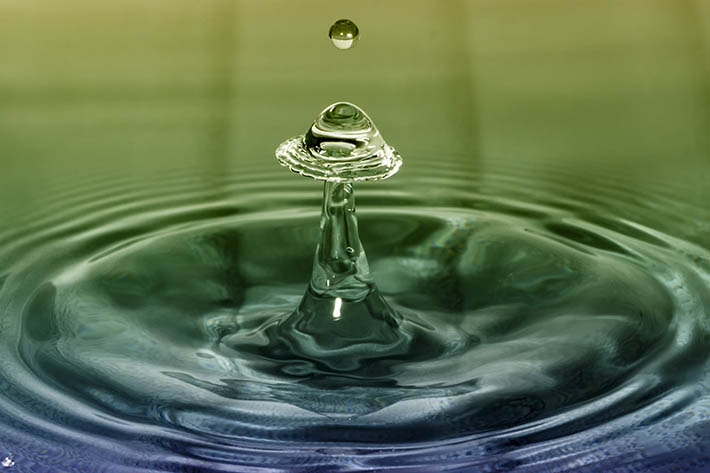
Advantages of Mastering Photography:
- It develops your originality and vision.
- It forces you to extrapolate and focus on what’s important in busy environments.
- It teaches you to see how light shapes the form
- The artist is the sole designer and creator of artwork beginning from the very first step of photography.
- It’s a forgiving medium, giving you many chances to practice at all times. You become attuned to cropping and balancing techniques that artists traditionally use in their paintings.
Disadvantages of Using Photography:
- It often flattens out the form to such a degree that you have a hard time re-creating the volume. That’s why it is best to start taking pictures with one directional light source that gives you definite lights and shadows.
- Camera makes its choice. Even the best cameras don’t capture what you see as an artist, which involves emotion. By working from a picture, artists analyze the subject rather than respond to it freely.
- There is a lot of distortion in the images depending on the lens and camera you use that is obvious in cityscape photography or in pictures of geometric objects. The same distortion is present in pictures of people or fruit, or whatever subject you have, but our eye doesn’t catch those distortions as quickly as we notice those in linear and geometric forms. Those “unseen” distortions will travel to a student’s drawing when the artist transfers the outlines rather than learns to sketch freehand from his reference.
- You may have problems with exposure. Use the HDR (high dynamic range) function on your phone to level out the exposure. HDR combines two or three pictures into one automatically, giving you a single balanced shot. HDR function is very handy when the sky looks too bright or the background is so light that it makes your subject appear too dark. • You can take good pictures with your phone, although the quality won’t be the same as shooting with a DSLR (digital single lens reflex) camera. If you shoot with your phone, zoom in on your object as closely as you can. That will blur the background, giving your subject a boost in color and texture.

Subjects

First of all, decide what you favorite subjects are, and isolate them from busy environments. Here are some ideas for your photography. Close-ups of textured subjects—these can be the most fun, unpredictable subjects for your photography and art.
They can be reflective surfaces and reflections, fabric patterns and lace, rusted door locks, wood grain, colorful feathers, candy, sliced fruit, marbles, flowers, kitchen utensils or tools, and even mechanical parts of clocks. Other popular subjects are glass; portraiture; animals, birds, and pets; food; florals; seashells and sea life; trees and landscapes.
Properties of light
Your goal of shooting in the “right lighting conditions” is to beautify your subject and to bring the best out in it. Ask yourself what attracts you to this object. It could be a specific texture, transparency, color, or an abstract pattern of light and shade that you see. You need to figure out what you love about your subject and how you can highlight its most attractive qualities in a specific light. If your subject looks boring in a picture, chances are that the lighting conditions were boring at the time it was shot.
Light temperature:

The light can be either warm or cool. In the beginning it may be difficult to spot the difference, but if you ask yourself if it is yellowish or bluish, it makes more sense. Fluorescent lights tend to be cooler, while the tungsten lights are warmer. In nature, you see a beautiful golden light twenty minutes before the sunset. The light temperature affects how you see the colors and how they unify everything in the image. You also use the light temperature to understand the color on your subject: if the light is cool, it gives cool lights and warm shadows. If the light is warm, it gives you warm lights and cooler shadows.
Quality of light:
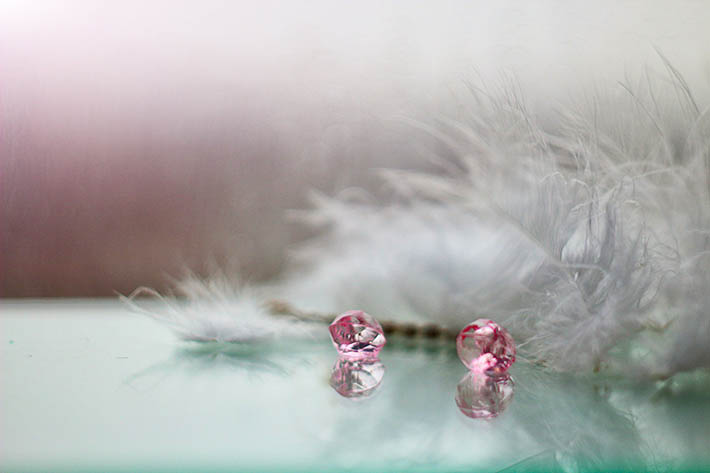
Natural light is the most beautiful light we have as artists. While the soft, diffused light may give the artist beautiful, soft skin tones in portrait photography or a dream-like mist in a landscape, this light is difficult to master for a beginner who is shooting pictures of glass, fruit, or flowers. The glass loses its sparkle and reflections, the fruit doesn’t have the volume or shadows, and flowers appear quite bleak. That’s because the diffused light gives you very soft, almost unnoticeable shadows and highlights, which, in turn, are difficult to reproduce in art for a student. Whatever the light temperature is, the goal is to avoid getting monotonous images that often happen in diffused light situations when you have an overcast sky.
Light direction and shadows:
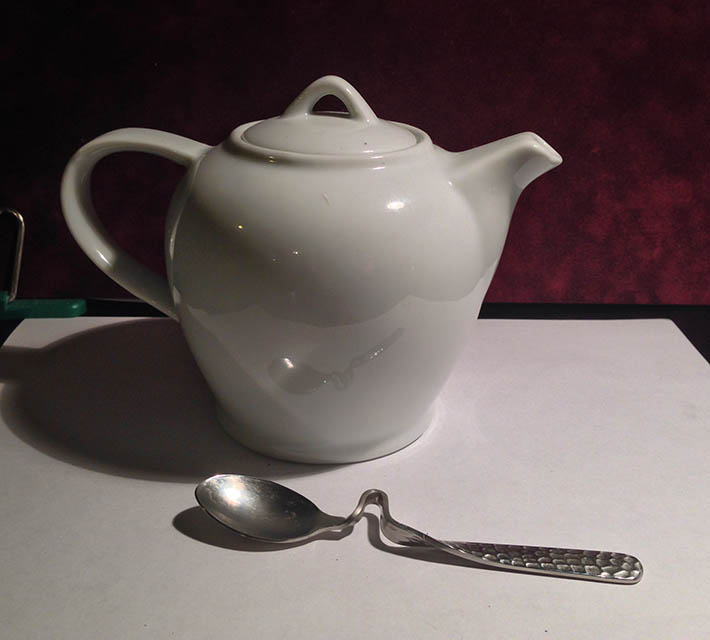
The most effective way to study the light on a form is to have a singular, strong directional light source set up at 45 degrees, which is often called Rembrandt lighting. This light direction creates beautiful highlights and shadows that will add dimension to your objects.
If you go to an atelier school of classical painting, you’ll see students draw from plaster casts and still lifes set under a single directional light that doesn’t change direction for the entire drawing process. Such setups are vital to an artist’s understanding of how to turn the form. So when you take pictures inside, find and focus on one primary light source, like a table lamp, and consider its strength. Look at your subject and find definite highlights and shadows on and under it because it will give you this 3-dimensional quality you want to re-create in your drawing.
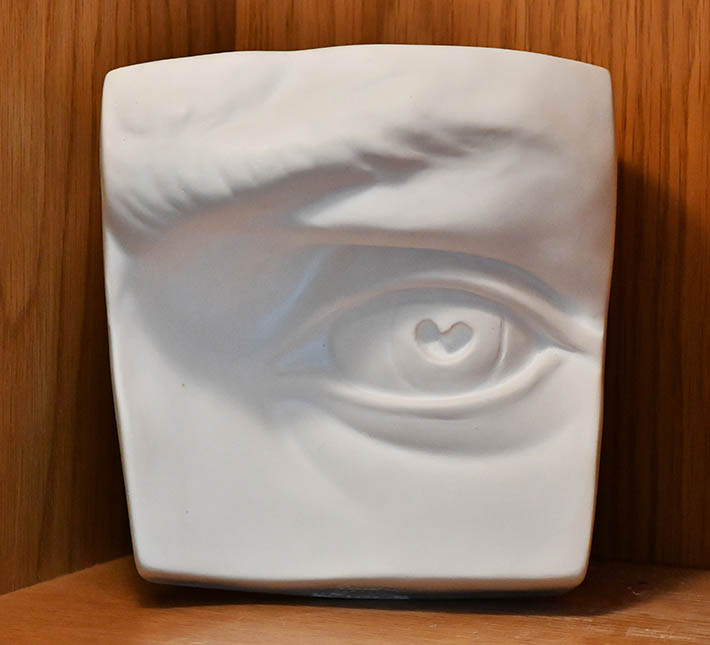
In my video course I teach how to take your colored pencil drawing to the next level including set up and photography. Watch a video preview here:
Depth of field:
Shallow depth of field allows you to capture your object in a sharp focus, blurring the rest of the image. A soft background supports the focal point rather than competing with it. When you have a high depth of field set at f16 on your camera, everything is in focus, and oftentimes the image will look too busy and indistinguishable from other elements in the background where everything competes with each other. Always think what you’d like to focus on, then make it your priority by zooming in or fixing the depth of field.
Zoom in, keep it simple & use negative space as a design element:
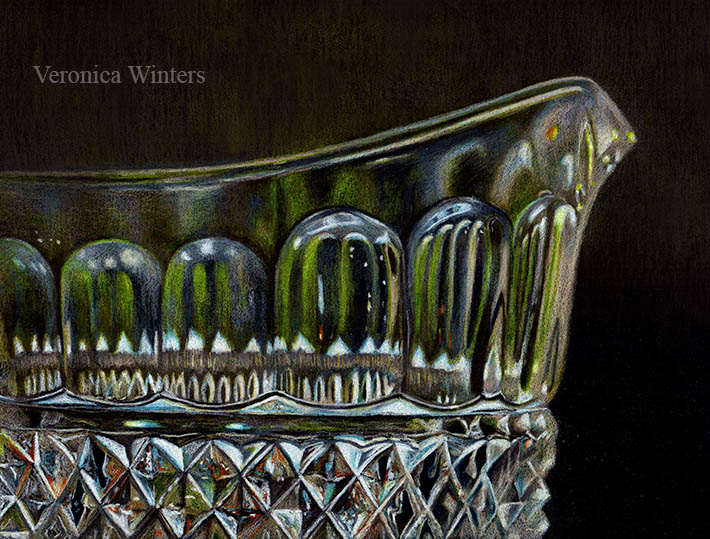
Background affects the edges and creates abstract shapes. As a beginner, stick to plain backgrounds to isolate your subject and to show contrast. After a while you can start playing with the color and complexity of your negative space as well.
Use backgrounds and boxes for staged photography:
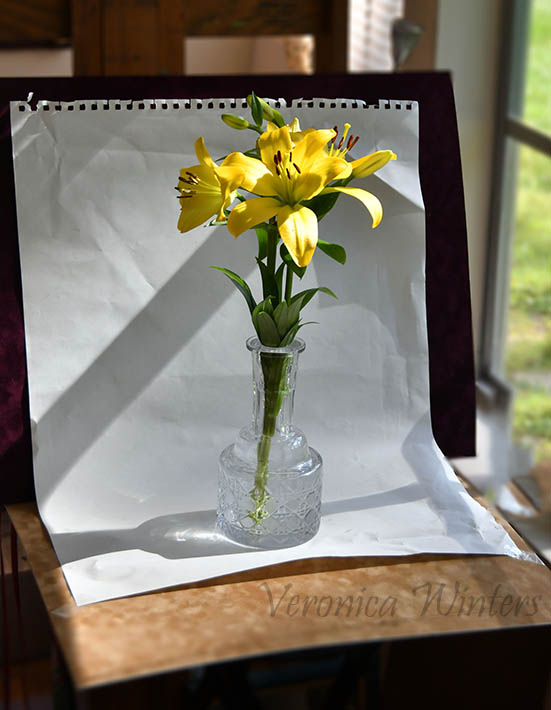
If you don’t want to buy a light box, you can make a very simple setup next to your window. Use colorful but plain matboards, fabric, or paper as your choices. The result is a single image with a beautiful, natural directional light, a shadow, and a white or color background all around it.
Avoid flash photography:
Flash destroys the natural flow of light and its shadows. It flattens out the object and gives you strange, unnatural colors. Professional photographers know how to rotate their flash unit to get the right position of the flash, but most of us don’t!
Prioritize values over color:
When a student is learning to draw and paint, it is difficult to translate hues to tones. Convert your photos into greyscale to see values. Most students end up with middle-toned drawings because of weak contrast.
Well, I hope this article helps you to shoot beautiful pictures as references for your art!
